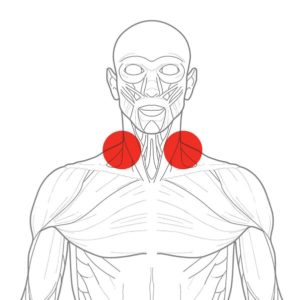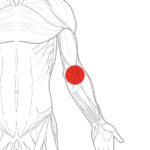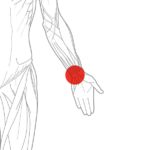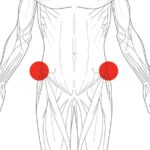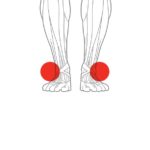How to Prevent BJJ Injuries
Heather Raftery
The words “BJJ” and “injury” go together all too well. Even with good intentions, ego-free rolling, and a tap “early and often” mentality, training jiu jitsu puts strain on the body that makes getting BJJ injuries almost inevitable.
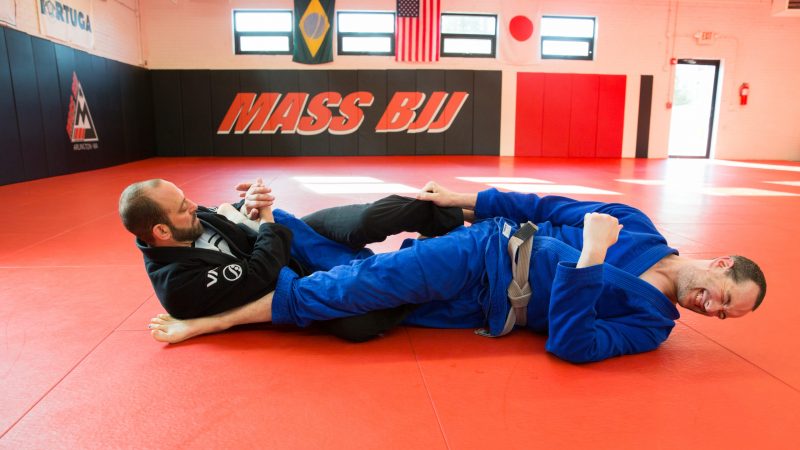
BJJ Injuries: It’s Not If… It’s When
Let’s face it: in a sport like jiu jitsu, it’s not if you get hurt… it’s when. And how severely. Oh, and how often. For as much of a physical benefit we obtain from rolling around on the mats, we have nearly as much potential for injury. Which is why our non-practitioner friends often question our sanity. And sometimes we do, too… but this sport is just so damn addicting. So, what are your options for preventing BJJ injuries?
Tapping Out isn't Enough
Until now the only prescription for BJJ injury prevention has been to “tap early and tap often”. But we all know how inadequate this is. There are simply some things that you just can’t “tap early and tap often” to. Take freak accidents that happen in the heat of the moment… a slight misaligned step, or too much lateral pressure on an already weakened joint. Then bam! You find yourself facing weeks to months off the mat. That’s followed by increased irritation, anxiety or depression because you lack your daily jiu jitsu fix, as well as frustration over the set-back in your progress. Not to mention muscles atrophy that comes with a break in training. And of course, this almost always happens just when you were getting into your groove. We’ve all been there.
Rehab is Too Late
Now, you’ve heard of “rehab”. Who hasn’t? Many – if not all – of us have had to rehabilitate some body part after an injury, whether mild or serious. Maybe you even had to take significant time off to heal, followed by numerous visits to your local physical therapist in order to properly strengthen a weakened or atrophied joint or limb. Likely the process was excruciatingly slow (not to mention expensive). Maybe you were impatiently counting the days before you could get on the mat. Maybe you even jumped back in too early, and set yourself back even further.
But what if I told that you could possibly have prevented that BJJ injury? Or at least minimized it to a significant degree? That you could have avoided those countless lost days and hours of PT with just minutes a day, several days a week? That “tap early and tap often” isn’t the only way?
Prehab Specifically for BJJ Injury Prevention
As the name suggests, Prehab is all about preventing injury and the need for a lengthy rehabilitation. And the best part is that the program is BJJ specific. You can select the Prehab program that best suits your specific body imbalances, weak joints, BJJ experience level, and much more.
The BJJ Prehab program was designed by Mike Pellegrino, who is a Doctor of Physical Therapy, third degree black belt, and head of instruction at Mass BJJ.
More about Prehab
Prehab is defined as a form of training program that is specifically targeted at strengthening the muscles and joints – as well as increasing flexibility, range of motion and motor control – in order to prevent injury. Distinct from your typical strength training program, a prehab program is designed by a physiotherapist or physical therapist who has specialized knowledge of the human body and its movement patterns. Ideally, this person is also familiar with your sport or activity. That person can tailor the program to your individual needs.
Traditionally, prehab has been a concept largely limited to pre-surgery care. Following a serious injury and before any kind of operation, you would be prescribed a prehab program in order to improve the success of the surgery and reduce the amount of rehab needed afterward.
At BJJ Prehab, we’re trying to make the concept of prehab more commonplace.
Prehab for Sports Injury Prevention
In the last decade, prehab has been gaining wide traction in the sports industry, as an injury prevention strategy.
Many of the world’s top professional athletes in football, soccer, extreme sports and CrossFit have already jumped on the prehab bandwagon. These athletes have limited time in between their already rigorous training schedule and their strength and conditioning regimen. They – and their coaches – have recognized the importance of carving out 10-20 minutes each day for prehab exercises. Why? Because as their careers depend on their bodies being able to perform at or near 100% capacity, they can’t afford to take months off due to injury.
Just as top Brazilian jiu jitsu athletes have been slow to acknowledge the importance of incorporating an S&C program into their training – largely due to this “train jiu jitsu to get better at jiu jitsu” mentality – they have also been slow to adopt prehab into their training schedule. Which, if you think about it, is incredible! Consider the very compromising positions we often put ourselves into. Think about the high percentage of BJJ injuries, both large and small, that occur day-to-day on the mat. One might argue that BJJ might even have the highest incidence of injuries among all sports. Yoga has gained some popularity recently, but yoga alone isn’t enough. Therefore, not incorporating an intelligently-designed injury prevention program into your jiu-jitsu routine is a blatant disregard for our health and longevity on the mat.
No Excuses
Anybody can find time for 10-20 minutes a day. And with affordable online programming from BJJ Prehab, that can be done in the comfort of your own home, there’s no excuse anymore. The hard part is battling that “if it ain’t broke, don’t fix it” mentality, and making prehab a priority. Whether you’re a high-level athlete, a daily mat warrior, or just a hobbyist, consider prehab. It is guaranteed to help keep your body better prepared for the stresses of jiu jitsu training, and keep you on the mat longer, so you can focus on what’s most important: your jiu jitsu journey.
Heather Raftery is an Atos black belt, freelance writer and social scientist (BA in Journalism and Anthropology, MA in International Studies). She has written for FloGrappling, Jiu Jitsu Magazine, Fighters Market and BJJ Prehab.


